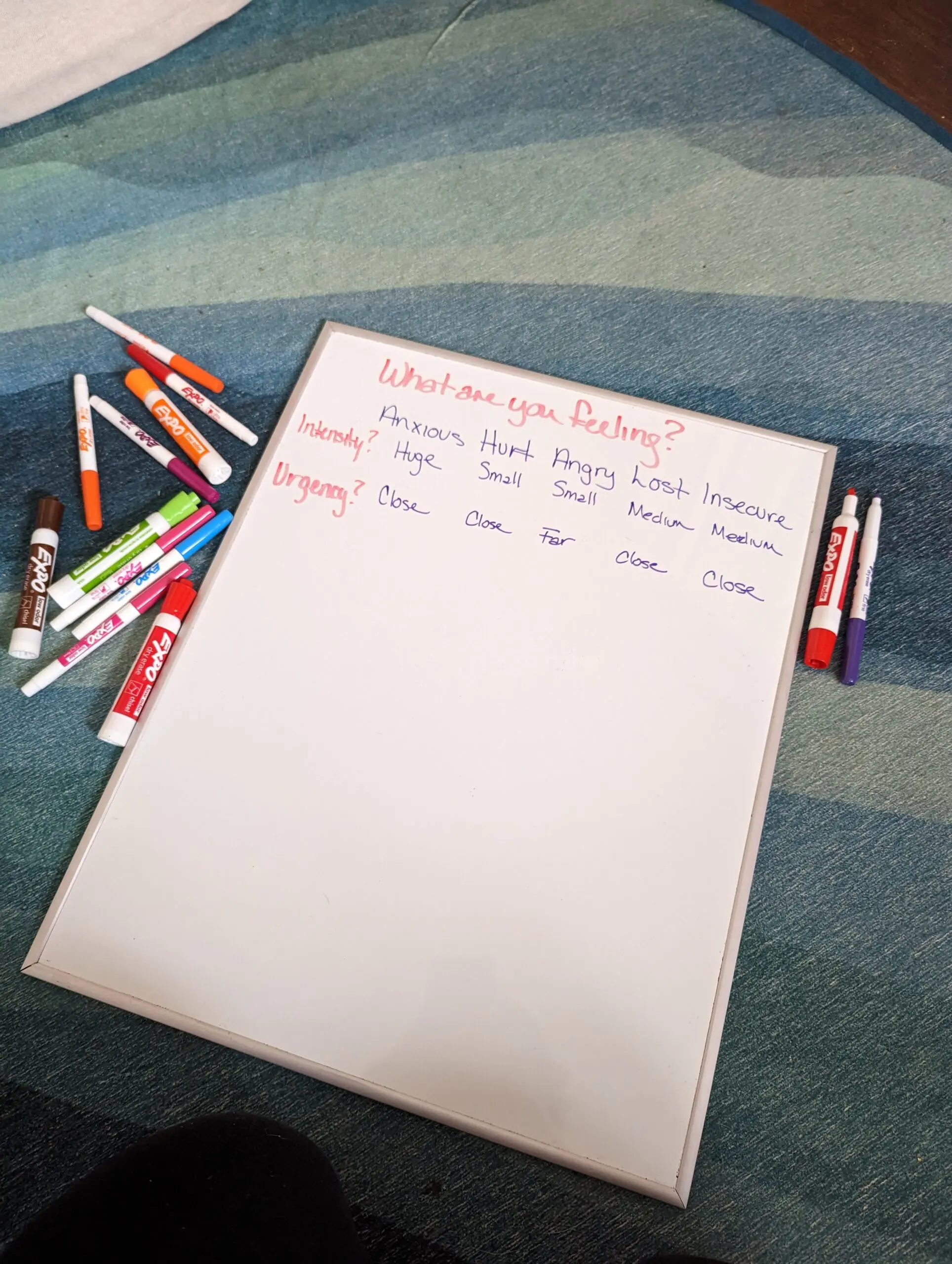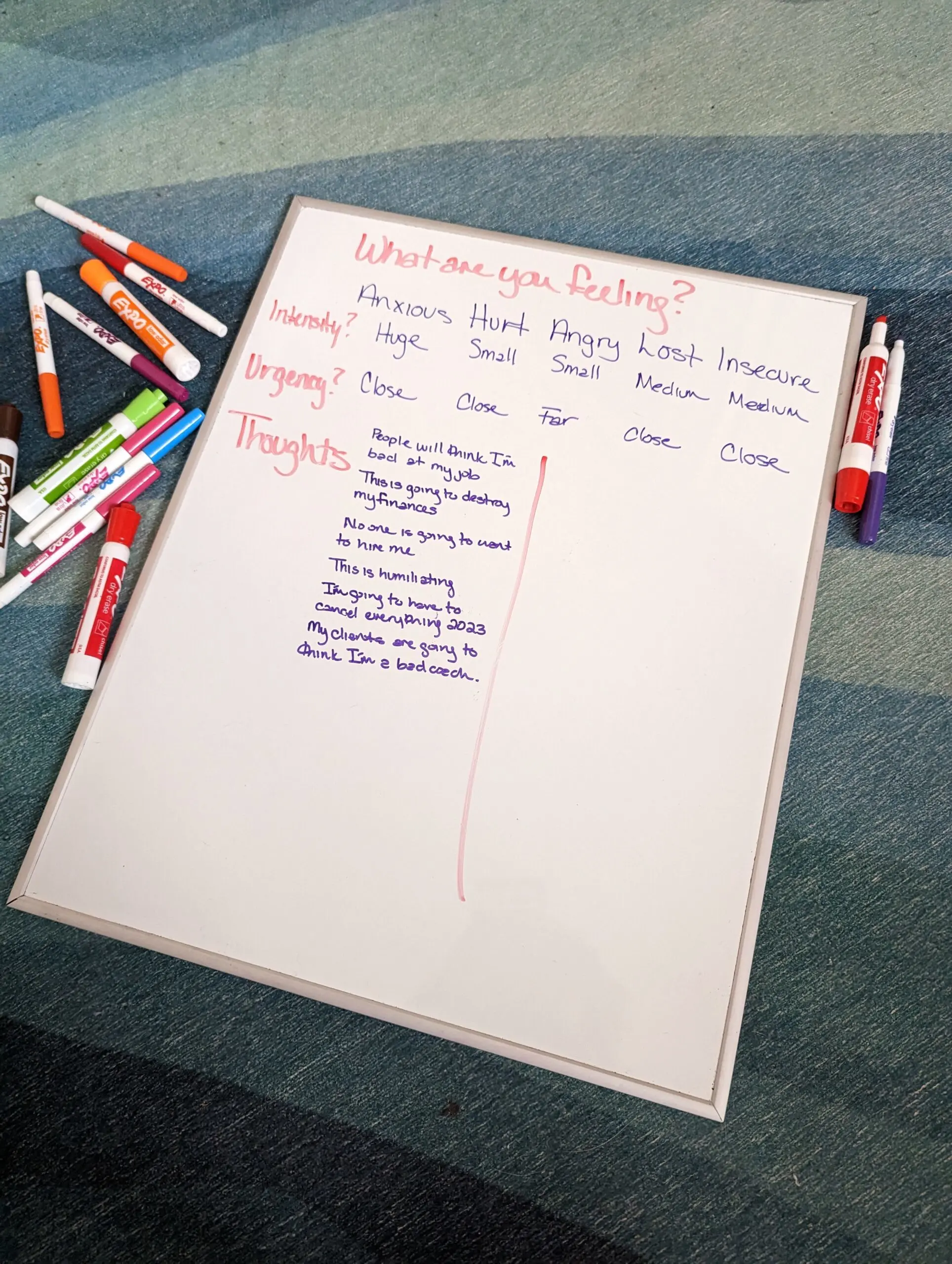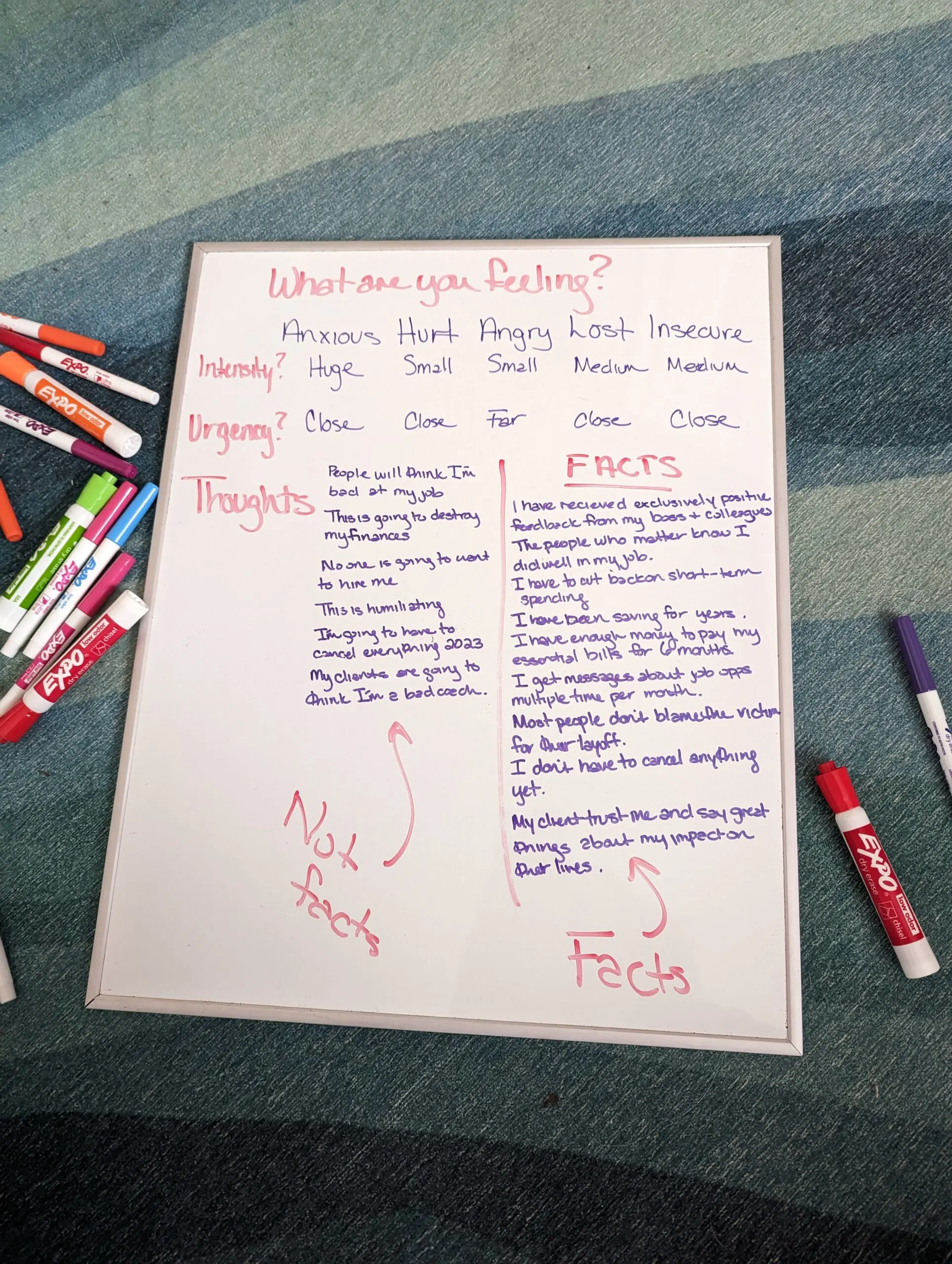I held it together during the meeting, but I started sobbing as soon as I got off the call. My job had been eliminated.
My husband heard me crying and immediately came in from the other room. Still sobbing, I told him about the layoff and immediately launched into the litany of catastrophes it meant for my career and our family. He put his hand on my chest, “Slow down. What will help you slow down right now?”
It was the perfect question to ask. I was catastrophizing—falling down a rabbit hole of worst-case scenarios wholly disconnected from reality. My anxiety had set my internal dialogue to the fastest speed and the highest volume. If I didn’t slow down, I’d have a panic attack.
So, with the end of the world thundering in my ears, I pulled my whiteboard out, placed it on the floor, and began an unconventional journaling practice: whiteboarding my feelings.
Catastrophizing is a type of cognitive distortion, an unhelpful and inaccurate way of viewing a situation fueled by intense emotion. Years of cognitive behavioral therapy have given me many tools to temper intense emotions, but journaling is my favorite.
This method of journaling forces me to observe my thoughts and feelings as I experience them, so I can slow down and analyze them. Understanding which thoughts are grounded and which are distorted reduces the intensity of the emotion and unlocks my rationality. Then, I can respond to the actual situation instead of reacting to the distortion.
If you don’t have a whiteboard, try doing it on paper. I recommend against doing it on a phone or computer as you’ll be tempted to edit yourself.
Here’s how it works.
Label your emotions
Write down all the emotions you’re feeling with as much specificity as you can. I sometimes find it helpful to consult an emotional vocabulary list (my favorite is from educator Tom Drummond).

Focus on simply capturing what you’re feeling and avoid judging yourself. Whatever you’re feeling is valid, and it’s okay for you to feel it.
Label their intensity
When bad things happen, it’s normal to feel lots of different emotions. But it’s rare to feel all of them equally. So, acknowledge the nuance in your emotional experience by labeling each emotion’s intensity and urgency.

Again, it’s essential to acknowledge your experience without judgment. It doesn’t matter what other people might think or how they’d do in your place. Your experience is valid.
If you get stuck, imagine the emotion as a physical object and place it in your environment. Is it big or small? Is it close or far away?
Write out your thoughts
What are all the thoughts your emotions are generating? Mine created lots of distorted thoughts that made me feel worse and worse. Writing them down felt hard, but it also helped me realize how many were outlandish.

This is why journaling is so effective at helping you manage emotions. Emotions like sadness, fear, and anger live in a primal part of your brain: the limbic system. Writing engages the frontal lobe, an advanced part of the brain used for rational reasoning.
Activating the rational part of your brain by writing primes you to ask and answer the most critical question in this exercise: What is true?
Respond with facts
I felt insecure, and I thought everyone would believe I got laid off because I was terrible at my job. But thinking or feeling something doesn’t make it true. So, the next and most impactful step is to find the facts of the situation.

Don’t look for the positive or the negative when responding with facts. Just write down what is true. This helps you see whether you’re reacting to realities or distortions. For example, it is true that I’ll have to dramatically cut back my spending. But the idea that everyone will think I was bad at my job is a distortion.
Erase everything but the facts
The final step of this exercise is to erase everything but the facts. It’s not that the emotions and thoughts don’t matter or that I’m trying to pretend they don’t exist. It’s about helping me focus.
At this point, I feel much calmer. The emotions haven’t disappeared. They’ve been tempered by a factual reframing of the situation. As I plot my next steps and navigate the emotional swings to come, I want to focus on the facts that will help me stay calm and make good decisions.
If you do this exercise on paper, cut out the part of the page with the facts and put it somewhere visible. My whiteboard is leaning against the wall next to my desk.

I’m out of work. I’m going to have to cut any non-essential, short-term spending. I can’t control what other people think of me. I have a robust professional network of people who will help me. My career coaching business is well-established and profitable. I have savings. My husband still has a job. These are all facts.
Lots of aspects of this situation suck, and it’s natural for me to have strong feelings about it. But this is not the catastrophe my emotions are telling me it is. Leaving the facts up reminds me of this and helps me find a center when the anxiety spikes.
Phoebe Gavin is a career and leadership coach helping ambitious professionals build successful, fulfilling careers without sacrificing work-life balance. She is also the former executive director of talent and development at Vox.
Recognize your brand’s excellence by applying to this year’s Brands That Matter Awards before the final deadline, June 7.
Sign up for Brands That Matter notifications here.
